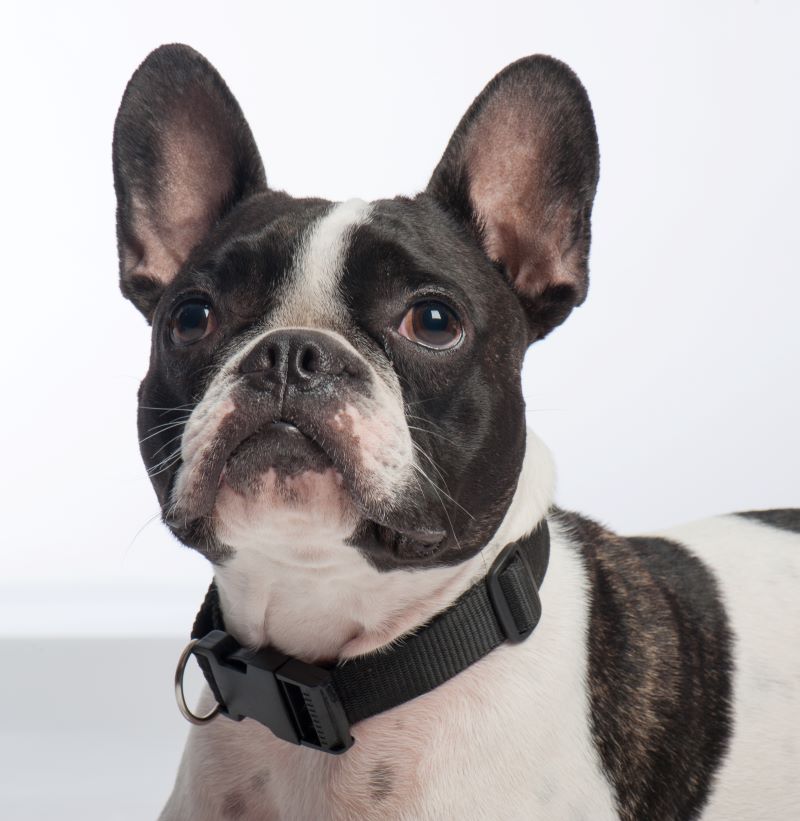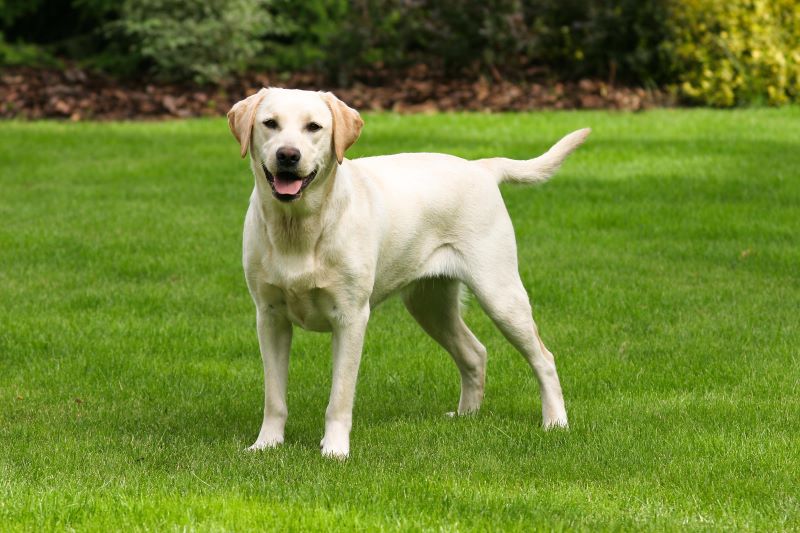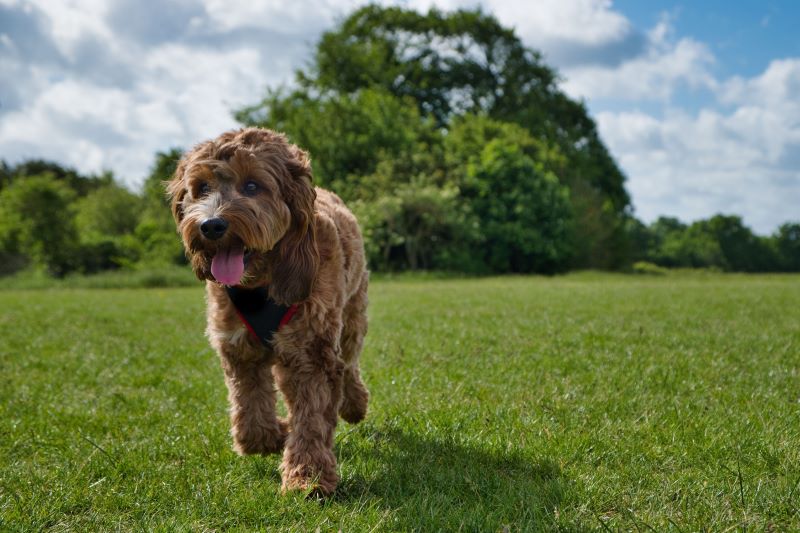Who’s top dog? French Bulldogs and Cockapoos claim top spot for the UK’s most popular puppies
A new study by the Royal Veterinary College reveals that French Bulldogs and Cockapoos have now overtaken Labrador Retrievers and Jack Russell Terriers as the UK’s favourite puppy to acquire, posing serious questions about longer-term impacts of the breeds we own on the health of the overall UK dog population.

According to new research from the Royal Veterinary College (RVC), while general crossbreeds (mixed breeds) remain the most common type of dog living in the UK (24% of all dogs), when considering dogs under the age of one, the French Bulldog (7%) and Cockapoo (6.2%) have now become the most popular specific breeds in the UK. This demonstrates the evolution of public demand for dogs in two divergent directions, with some owners desiring more exaggerated body shapes in their dogs while other owners are moving away from the traditional breeds that have been offered for over a hundred years.
Dogs are hugely popular companion animals, with the UK canine population rising from 8.3 million in 2011 to 11 million in 2023 (PDSA study). However, there has been limited information until now on what breeds make up the overall dog population in the UK. Understanding the demography of the dog population and the implications of choices on which breed to acquire can help owners when deciding which type of dog to purchase. National data on dog breeds can also help policymakers and the government put the best reforms in place to protect the health and welfare of dogs and their owners in response to changing trends in the UK dog population.
The study, led by the RVC’s VetCompass programme, investigated which dog breeds, body shapes, body weights and sexes were most popular in the UK. The study included the biggest epidemiological research sample of UK dogs ever assembled, consisting of 2,237,105 dogs under first-opinion veterinary care in 2019.
The study identified that there are now 800 distinct breeds of dogs in the UK. Of these, general crossbreeds were the most common type recorded across all ages. The most common specific dog breeds across all ages were the Labrador Retriever (6.9%), Jack Russell Terrier (4.5%), English Cocker Spaniel (4.3%), Staffordshire Bull Terrier (4.2%) and Chihuahua (3.6%).

However, it is the information on puppies that shows what the new favourite breeds in the UK are and helps to predict the future for the UK dog population. Among UK puppies under one year of age, after general crossbreeds (20%), the most common breeds were startlingly different compared to the overall dog population, with the most popular being the French Bulldog (7.0%), Cockapoo (6.2%), Labrador Retriever (5.8%), English Cocker Spaniel (4.7%) and Chihuahua (4.2%).
Dogs as a species were designed by nature over millions of years with a body shape that offers optimal survival and health. However, over the past few hundred years, humankind has re-shaped dogs to split a single species into 800 distinct breeds with widely differing body shapes and characteristics that often do not exist in nature. Creating all these breeds has been described as man’s greatest genetic experiment but big questions are now being asked about whether all breeds have benefitted from this experiment. Whilst the moderate body shape of many breeds poses little risk to their health, sadly there is now evidence of substantial harm to the health and welfare of several breeds with extreme body shapes. For example, although popular in the UK, many French Bulldogs carry high risk of lifelong and serious health issues such as breathing difficulties, eye, skin and spinal problems - all linked to their extreme body shape with a flat face, and short spine with a deficient or absent tail. Unfortunately, many of these extreme features are often the very characteristics considered ‘cute’ by the public which paradoxically make the breeds so popular. Owners should carefully consider these serious health risks and the hugely increased average costs of medical care for dogs with extreme body shapes when deciding what type of dog to acquire.

The emergence of the Cockapoo (Cocker Spaniel X Poodle) as the UK’s second most popular UK breed reflects a growing trend away from traditional breeds and towards designer crosses that deliberately mix traditional breeds to create new breeds. Other popular designer crosses in the study included the Cavapoo (Cavalier King Charles Spaniel X Poodle) and Labradoodle (Labrador Retriever X Poodle). Booming demand for designer breeds means that owners often pay far more for their designer crossbreds than they would have for the parent purebreds. Widely held beliefs that designer crossbreed dogs make better pets, trigger fewer allergic reactions in owners or are easier to look after may be driving this popularity. From a dog welfare perspective, there also seems to be a perception that their hybrid genetics should make designer crosses healthier than their more inbred purebred parent breeds. However, as yet, there is limited evidence to support any of these beliefs.
Dr Dan O’Neill, Associate Professor in Companion Animal Epidemiology at the RVC, and lead author of the paper, said:
“With 800 dog breeds available in the UK, this VetCompass study shows there are still plenty of healthy breeds to choose from that do not suffer from extreme body shapes such as flat faces, skin folds or absent tails. Despite this, many UK owners are still persuaded by social influences and trends into acquiring dogs with extreme body shapes that are likely to result in serious health issues during much of their dogs’ lives. The advice is to stop and think before buying a dog with an extreme body shape.”
Dr Kirsten McMillan, DataSEA (Science, Engineering & Analytics) Manager at Dogs Trust and co-author of the paper, said:

“This paper highlights that the popularity of dog breeds is not immune to fads or trends. Of particular concern, is the shift in consumer preference towards specific aesthetics and characteristics that have been linked to serious health issues – e.g., the flat-faced and exaggerated body shape of the French Bulldog. This emerging trend, along with the emotional strain and financial cost of owning a pet with serious health problems, may be why Dogs Trust has recorded a three-fold increase in French Bulldog handovers over the past five years. We hope this paper encourages prospective dog owners to be thorough in their research and to prioritise the welfare of their new pet - above all else. Helping to ensure a long and happy life for their new family member.”
Bill Lambert, Health, Welfare and Breeding Services Executive at The Kennel Club, added:
“We urge the public to ‘stop and think before buying a flat-faced dog,’ find a responsible breeder, learn about the breed-specific health tests and screening schemes they’ve used, meet the parents of the puppy and avoid those with extreme physical features, such as very flat faces or excessive wrinkles.
“This research, funded in part by The Kennel Club Charitable Trust, underlines the importance of getting the message out that ‘buying or rescuing a dog is a lifetime commitment’, and highlights the need for The Kennel Club and other canine welfare organisations to continue to help dogs and owners with the issues that arise when a breed explodes in popularity.”
Notes to Editors
Additional findings from the study include:
- 4% of dogs were classified as purebred, with 6.7% classified as designer-crossbred and 24.0% as non-designer-crossbred
- There were slightly more male than female dogs in the population (52.2% males, 47.8% females). Female dogs were statistically older and lighter than male dogs
- When looking at hair type, 54.6% of dogs were short haired, 32.6% were medium haired and 12.8% were long haired
- Ear types varied among the population; 24.5% had erect ears, 28.1% had semi-erect ears, 19.7% had v-shaped drop ears and 27.7% had pendulous ears
- 6% of dogs were chondrodystrophic (short-legged)
- 74% of dogs overall were neutered. Females were more likely to be neutered than males. Neutered dogs were older and heavier than entire dogs
- Brachycephalic dogs were statistically significantly younger than mesaticephalic dogs and dolichocephalic dogs
- 1% of dogs were classified as mesaticephalic (medium-length skulls e.g. Labrador Retriever, Beagle), 8.3% of dogs were dolichocephalic (long-faced e.g. greyhound, whippet), while 17.6% were brachycephalic (flat-faced dogs e.g. French Bulldog, Pug).
Reference
O’Neill et al. (2023) “Dog breeds and conformations in the UK in 2019: VetCompass canine demography and some consequent welfare implications. PLOS ONE
The full paper is freely available online at DOI: https://doi.org/10.1371/journal.pone.0288081
https://journals.plos.org/plosone/article?id=10.1371/journal.pone.0288081
For media enquiries, please contact:
- Jasmin De Vivo (jasmin.devivo@plmr.co.uk) or rvc@plmr.co.uk
- Press Line: 0800 368 9520
About the RVC
- The Royal Veterinary College (RVC) is the UK's largest and longest established independent veterinary school and is a Member Institution of the University of London.
- It is one of the few veterinary schools in the world that hold accreditations from the RCVS in the UK (with reciprocal recognition from the AVBC for Australasia, the VCI for Ireland and the SAVC for South Africa), the EAEVE in the EU, and the AVMA in the USA and Canada.
- The RVC is ranked as the top veterinary school in the world in the QS World University Rankings by subject, 2023.
- The RVC offers undergraduate and postgraduate programmes in veterinary medicine, veterinary nursing and biological sciences.
- The RVC is a research-led institution, with 88% of its research rated as internationally excellent or world class in the Research Excellence Framework 2021.
- The RVC provides animal owners and the veterinary profession with access to expert veterinary care and advice through its teaching hospitals and first opinion practices in London and Hertfordshire.


